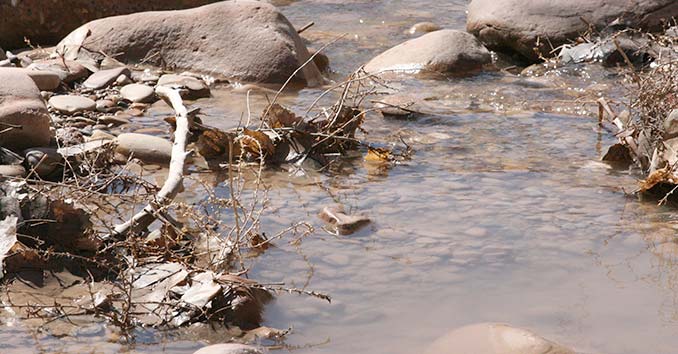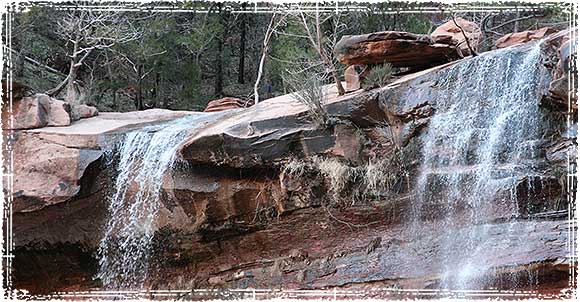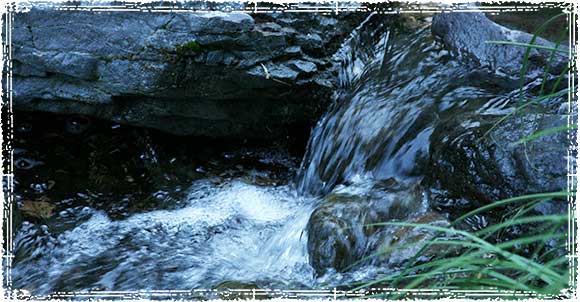
I do a vast majority of my outdoor activities in a harsh desert environment, so I think I understand the importance of planning for water emergencies better than most. Anytime I take a trip out into the desert, water is always one of my top priorities. Even on a short routine day hike, not having enough water can quickly turn into a life-threatening emergency. Unfortunately, I can’t tell you how many times I’ve seen even seasoned hikers fail to take adequate precautions to protect themselves from dehydration.
You never want to put yourself anywhere near a state of dehydration, especially when doing any strenuous activities where obtaining water may be a challenge. If you wait until you’re thirsty to start drinking water, you’ve already put yourself into the danger zone – your body is already dehydrated. That’s why paying attention to your water intake, and pre-planning is so critical to your safety.

It’s far easier to prevent dehydration than it is to treat it. Progressive signs and symptoms of dehydration include:
- Thirst
- Decreased urine output and or dark urine
- Dry mouth and chapped lips
- Reduced sweating
- Muscle cramps and pain
- Nausea and vomiting
- Heart Palpitations (increased heart rate)
- Dizziness
- Weakness
- Confusion
No matter what area of the world you live in, if you’re venturing out into the wilderness you need to carry enough water to sustain yourself during an emergency, and you need to have a plan for refilling your supplies if things go bad.
Know where to find water during an emergency.

Before ever setting foot on the trail you need to research the area. Take some time to find out where the local water holes are, and make sure you plot them on your maps or GPS devices.
- Ask others who hike or hunt in the area about local watering holes.
- Jump on Google Earth to find nearby lakes, ponds or rivers.
- Study topographic maps of the area for small streams, or areas that may hold water.
- Contact whatever agency manages the area you plan to visit; they can provide you with knowledge beyond what you’ll find on maps. Just because a watering hole appears on the map, doesn’t mean it’s available year round.
Finding Water in the Wilderness: What to look for.
Hopefully, you already did some pre-planning, and have a pretty good idea where the local watering holes are. But if you find yourself in a situation where water is scarce, there are some things you should be on the lookout for to increase your chances of finding water.
Watch for:
- Valleys and low areas: These are the types of places where water naturally drains.
- Rock crevices: Watch for cracks or large holes and indentations, especially after a recent rainfall. These will be the areas where water naturally collects.
- Muddy or damp ground: A seep can be made almost anywhere the ground is wet, damp or muddy on a regular basis. Digging into the damp, muddy ground will create small pools of water. While this water will be somewhat filtered, it’s still advisable to treat the water before drinking.
- Large patches of vegetation: In harsh desert environments you want to watch for any signs of fresh green vegetation. This is going to be your best chance of finding water.
- Animal Tracks: Animal tracks and trails are probably a good indication that water may be close at hand. Following these trails, or watching out for signs of wildlife can often lead you right to water.
Have a way to filter or treat backcountry water.

The tricky thing about water is looking at it tells you nothing about how safe it may or may not be to drink. Even water that “looks clean” may be contaminated with some pretty nasty microorganisms.
- Carrying a Water Filter – Water filters are great because they’re quick, easy to use, and are ideal for those who are on the go. I recommend something like the Katadyn Pocket Microfilter; it’s one of the top filters on the market and my top choice when going anywhere.
- Carry a Steel Canteen or Water Bottle – Another thing that I always carry is a way to boil water. I’ve switched from plastic water bottles to stainless steel specifically for this purpose. One of the best I’ve found is the Klean Kanteen. I’ve been using them for years, and they can really take a beating.
- Chemical Treatments – Iodine tablets and liquid bleach are popular with light hikers, and can be a great option during a short-term emergency. Because you’re limited by the amount you carry, I still advise having a backup to this method in case you find yourself in a long-term survival situation.
Don’t ever underestimate the importance of carrying enough water.
The average person can survive without food for weeks, maybe even months. In contrast, if you go without water for even a day, especially in hot, dry environments, your body begins to feel the effects of dehydration.
Water should always be a top priority when planning any outdoor activity, and during a survival situation finding water becomes your number one priority.



Just found a great deal on a Lifesaver Jerrycan water purifier on Costco. Hopefully you can get on e while they are in stock